#ancient Peru
Text
728 notes
·
View notes
Text

Mantle fragment, 5th century BC-3rd century BC, Paracas, Peru.
64 notes
·
View notes
Text

A anthropomorphic cat from ancient Peru. There is archeological evidence that ancient Peruvians independently domesticated cats and kept them as treasured companions. Cats featured prominently in ancient Peruvian art, such as this textile from the northern coast of Peru dated to 900 - 1100 CE.
There is not much cultural context for this fragment of a long vanished civilisation, but I hypothesise that it could be a cat shape shifting into a human or a human becoming cat like. In Indigenous American cultures, the theme of blurring the line between human and animal in spiritual life and ritual is a reoccurring theme. What happened to the ancient domestic cats of Peru? It's unknown whether modern day pet cats in Peru are their descendants or if the ancient moggies died out. Perhaps this art tells us that those clever cats learned to take on human forms and they still exist as werecats among the indigenous Peruvian population.... This is the exact premise of one of my folk horror fiction story ideas!
#peru#peruvian#cats#ancient peru#native americans#indigenous americans#domestic cats#archeology#anthropology#humans and cats#werecat#shapeshifter
23 notes
·
View notes
Text
I am bit puzzled that they are saying that it is one of the first priests to control the temples in the area. How on earth do they know that?

16 notes
·
View notes
Photo

Trophy head (shrunken heads) from a grave at Nazca (after Tello)
#shrunken heads#Trophy head#black and white photography#b&w photography#Nazca#grave#Cabeza trofeo#archaeological#Nazca culture#ancient Peru#Peru
138 notes
·
View notes
Text
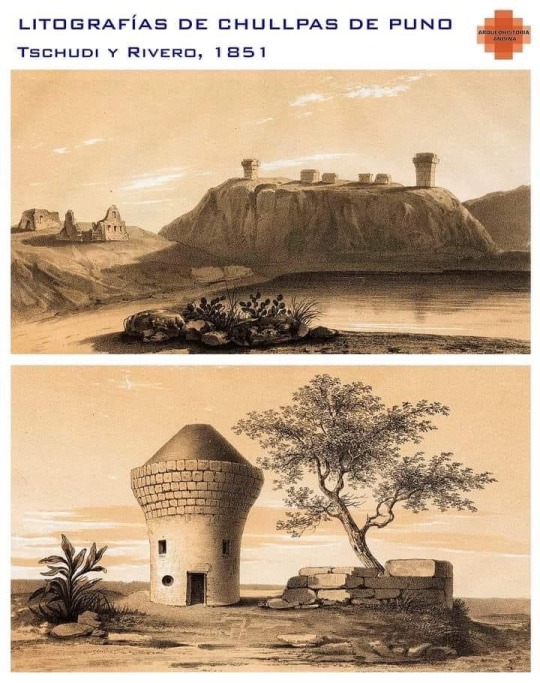
📍 CHULLPAS DE PUNO | Regarding these chullpas, Tschudi and Rivero (1851) mention: "The chullpas seen over the hill that bathes the small lagoon of Clustoni in the department of Puno, offer a particular construction, and we do not know if e Stas were rooms, or served for keep the grains and potatoes, or maybe from the graves [...]. []. “All we have examined are coated with limestone, sandy, and with pieces of mycacean sheath, with their windows half-high and split in half with breaded slabs inside, and covered with straw, or chunks of stones.”
ente Source: Peruvian Antiquities - Tschudi and Rivero, 1851.
📌 Images:
1. Different sized dips, in one of them you can see sculptures of lizards.
2. Condorhuasi near Azangaro.
7 notes
·
View notes
Photo

MWW Artwork of the Day (5/21/22)
Chimú Culture (Peru, 1000-1470)
Monkey Vessel (c. 1350-1400)
Silver metal container, 13.3 x 9.3 x 14 cm.
The Metropolitan Museum of Art, New York (Gift of Nelson A. Rockefeller)
Elaborate and refined vessels of gold and silver were produced in the last centuries before the rise of the Inca Empire by metalsmiths in the kingdoms of Peru’s north coast. Most likely made to hold chicha, a maize beer, drinking such beverages was at the heart of ceremonial activities in the ancient Andes. This example is composed of two parts: a plain, round-shouldered beaker connected by a cylindrical tube to a figure in the shape of a seated monkey with legs drawn up and holding a fruit to its mouth. Created from twenty-four pieces of silver sheet of uniform thickness joined together both mechanically and with solder, the vessel is hollow throughout. This meant that when liquid was poured in and out of it, air would be forced out through a sphere inside the head, creating a whistle. The sound would emanate from holes pierced in the monkey’s mouth, nose, and eyes. Thus, as the vessel’s liquid contents were tilted to imbibe, and then set back down, the air in the vessel would be displaced, and the monkey would appear to make a noise.
3 notes
·
View notes
Text
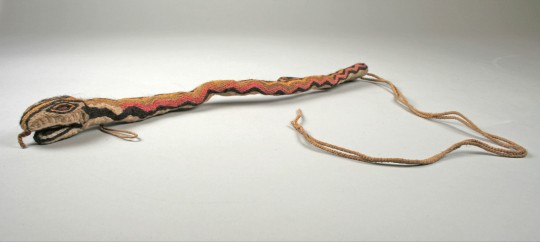
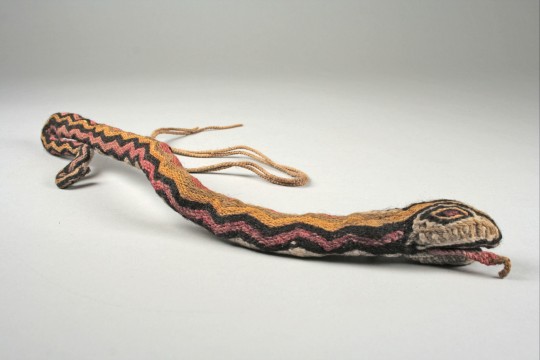

~ Serpent ornament.
Date: A.D. 1450–1532
Place of origin: Peru
Culture: Inca (?)
Medium: Cotton, camelid hair
#15th century#16th century#history#museum#archeology#ancient history#archaeology#serpent ornament#serpent#snake#inca#peru#a.d. 1450#a.d. q#a.d. 1532
2K notes
·
View notes
Text
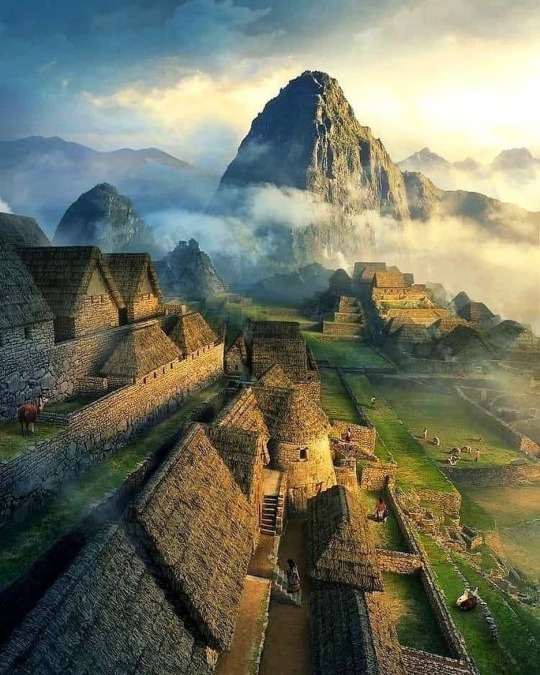
Machu Picchu
691 notes
·
View notes
Text
Ancient Explorers: The Lost City of Peru and The Man Behind the Legend Quest
On Ancient Explorers: The Lost City of Peru and The Man Behind the Legend Quest @omarmoraactor #interview #novel #graphicnovel #adventure #ya
People who attended SDCC a few weekends ago had plenty to look at. Whether that’d be comic books or the latest news on movies, there’s even something for the jungle explorer! Ancient Explorers: The Lost City of Peru is novel – comic book hybrid about two best friends on the quest for adventure! Together with two archaeologists, they discover an ancient map and a compass that’ll point them to more…

View On WordPress
0 notes
Text
In the Americas, for example, many cultures masked their dead in a fascinating array of styles. We have this one, placed on the face of a ruler from northern Peru who died about 1000 years ago:

The great Mexican city of Teotihuacan buried some of its dead with masks; this one would have been tied on through the holes in the ears:

The Mayans buried the king of Palenque, Kinich Janaab Pakal, in the 600s CE under this stunning jade mask:

Click the link below to read the whole piece and see my favorite one:
{WHF} {Ko-Fi} {Medium}
452 notes
·
View notes
Text
135 notes
·
View notes
Text

Mantle fragment, 5th century BC-2nd century BC, Paracas, Peru.
71 notes
·
View notes
Photo

Lil’ Meow Meow in Ancient Peru! It just sits there and stares at you!
“ICONOGRAFÍA en la cultura PARACAS NECRÓPOLIS (200 a.C. - 200 d.C.)En general, los textiles precolombinos de Perú muestran una extraordinaria RIQUEZA ICONOGRAFÍCA que alcanza su sofisticada perfección a través de los textiles de la cultura Paracas Necrópolis.Por ejemplo, en este fragmento de tejido de la imagen se nos muestra a un curioso BUHO. Lleva agarradas dos pequeñas FIGURAS HUMANAS. Dentro de su ESTÓMAGO vemos un animal cuadrúpedo con un lomo con protuberancias de saurio y un vientre dentro del cual aparece la imagen de otro animal similar...La iconografía Paracas, independientemente del soporte en que se exprese, evoca temas cosmológicos, mitológicos y se refiere al mismo tiempo a relatos históricos como la conquista y la fundación de asentamientos humanos, de batallas y de celebraciones de ceremonias.Un mundo de ensoñación de una cultura indiscutiblemente admirable.”
(Source: Amantes de las Culturas del Antiguo Peru Facebook page)
#native american#native americans#textile#peru#peruvian#peruvian art#ancient peru#paracas#indigenous americans#ancient art#textile art#andean#mythical creatures#feline#cats#cat art#yellow cat#lil meow meow#eyes#big eyes#creepy stare#stare#staring#native american art#weaving#black cat#pyramid#iconography
18 notes
·
View notes
Text
Interesting re-use of ancient architecture, rather than simply using it as a quarry.
15 notes
·
View notes
Text
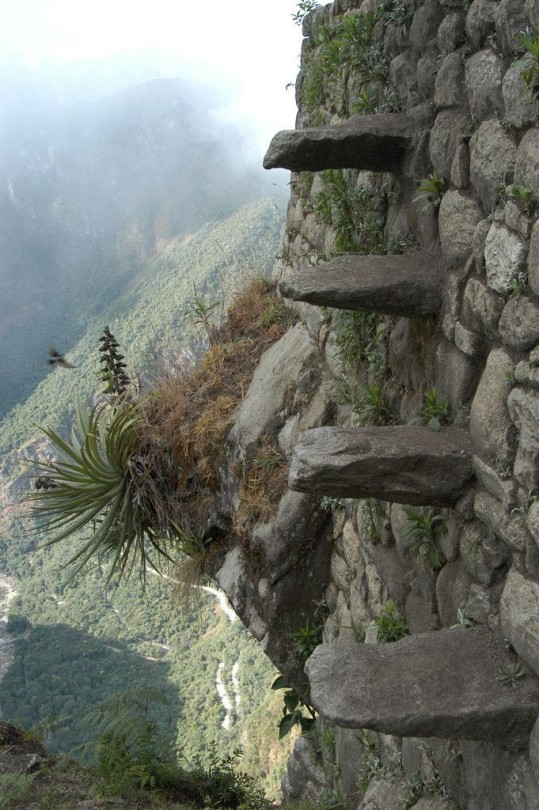
Death steps at Machu Picchu, Peru.
4K notes
·
View notes